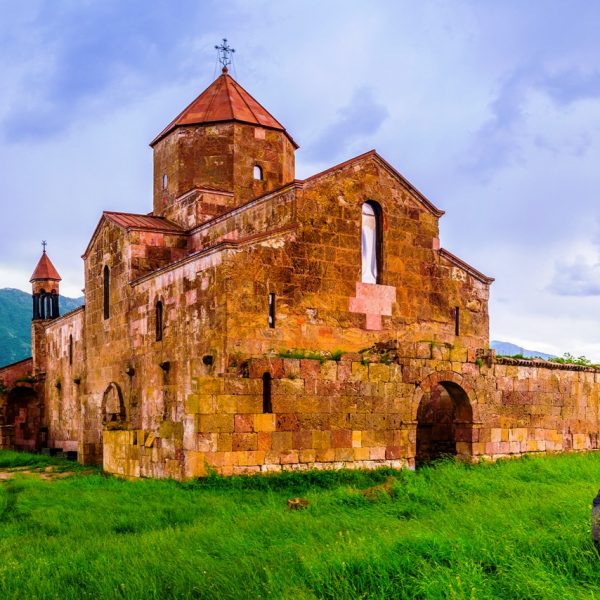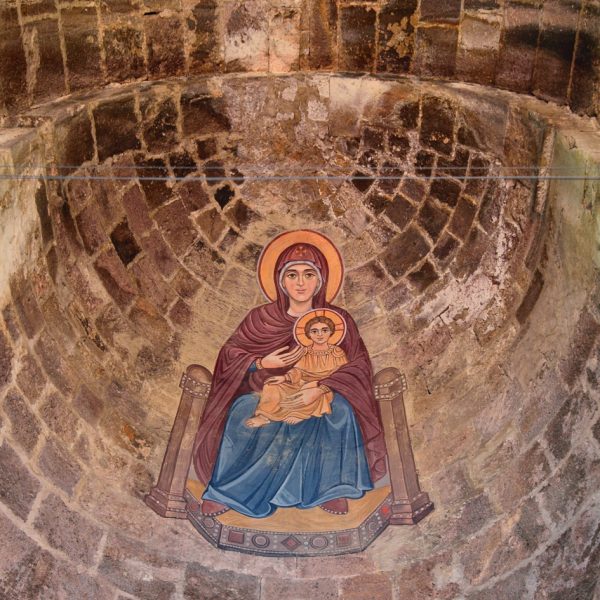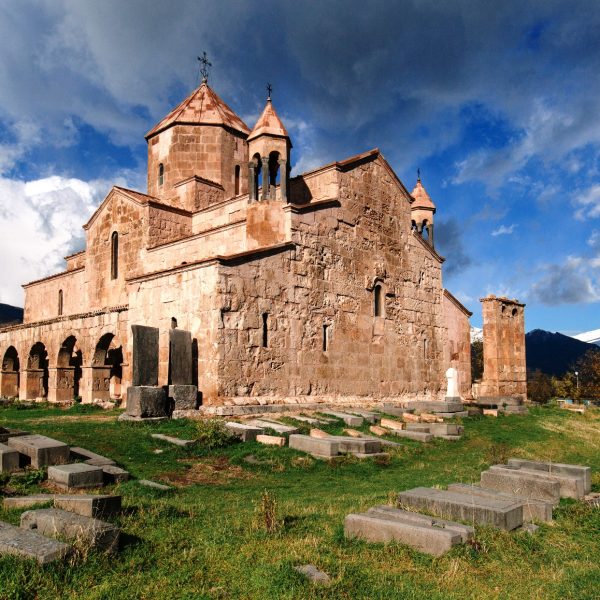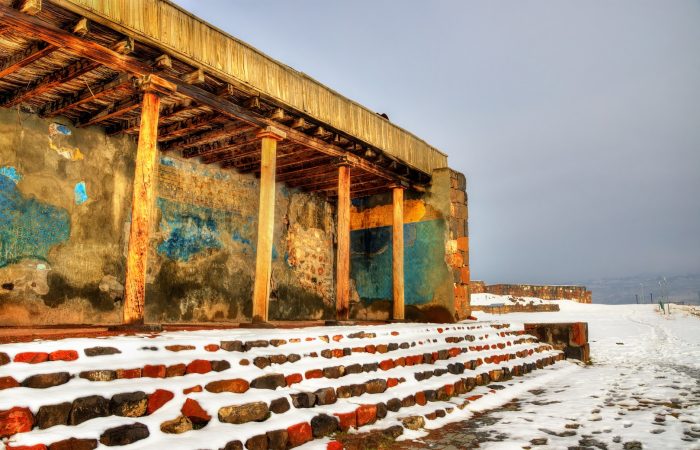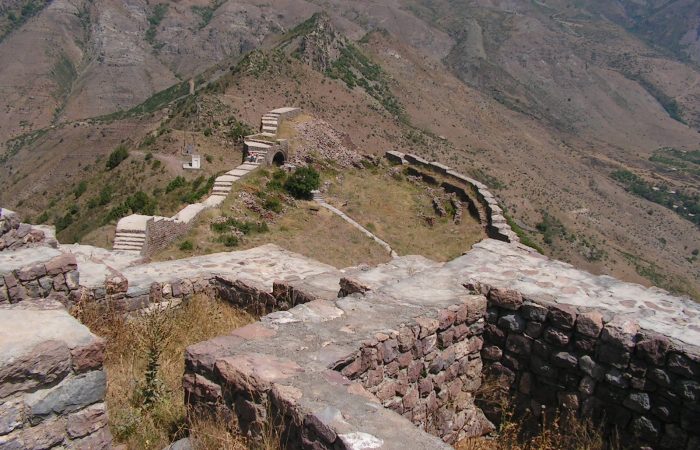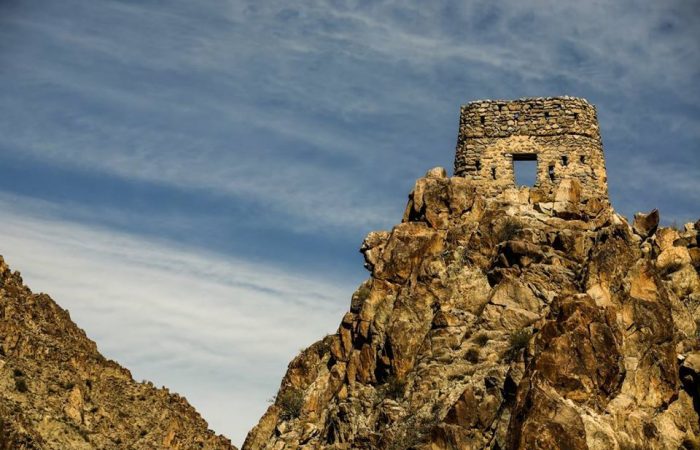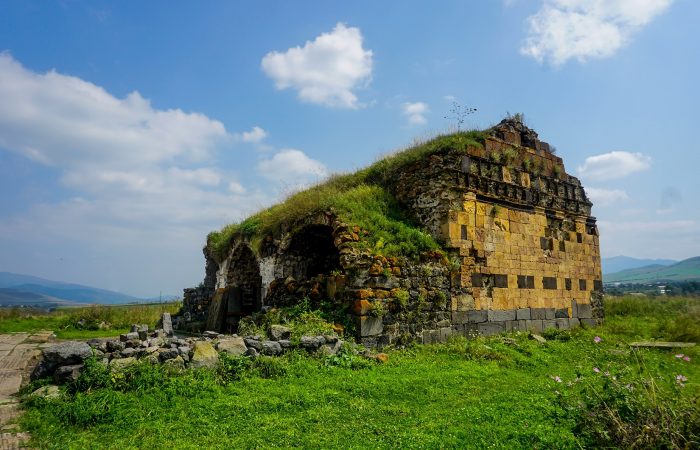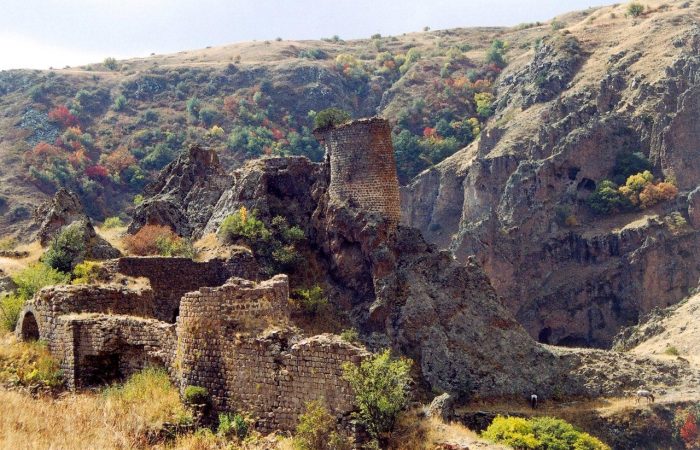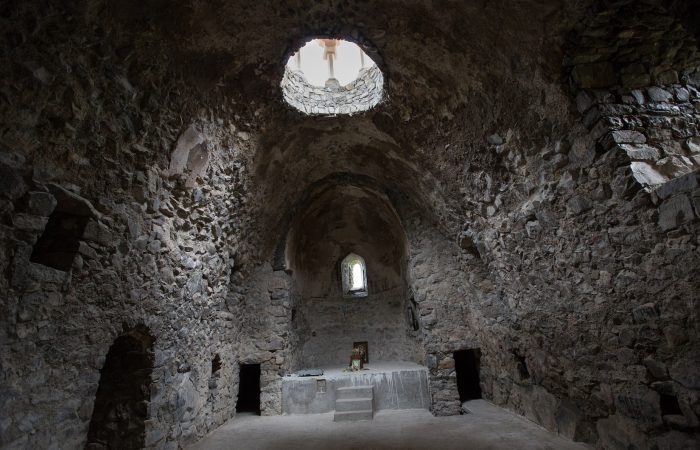Odzun Church: General and Etymology
Odzun Church is located in the village of Odzun, which can be found in the province of Lori. Note that until 1967 it was called Uzunlar, which is one of the altered forms of the word Odzun.
It is believed that the name Odzun comes from the Armenian word “otsel” meaning to ordain. In this regard, in a number of manuscripts the church appears with the name “Otsun.”
Odzun Church: History
The Church of Odzun or the same as the Church of Saint Astvatsatsin (Holy Mother) was built by King Tiridates III in 303-313 and was then consecrated by Grigor Lusavorich (Gregory the Illuminator), the first Armenian Catholicos.
Initially, the church represented a single-nave basilica without a dome and was much smaller but it was ruined because of an earthquake (5th century) and around 20 bas relief sculptures of the church were used during the reconstruction that was launched in the sixth century. Notably, those bas reliefs carry global value.
It is thought that one of the twelve disciples of Jesus Christ came to Armenia in the first century. That disciple was Thomas, who ordained a number of priests and bishops in the place of the church. Before leaving for India, the apostle buried the swaddling clothes of Jesus Christ in the place of the sanctuary of the present day Saint Astvatsatsin Church. An inscription found on the upper part of the church’s southern door states about that. The inscription dates back to the sixth century.
Later on, doubts regarding the truthfulness of the existence of the swaddling clothes came forth, and one of the sanctuary stones was removed to see if it was true or not. In all likelihood, it proved true and having been convinced of the existence of the swaddling clothes the opened hole was closed with three huge stones.
In the 8th century, the church was reconstructed by Cathlolicos Hovhannes II Odznetsi (as the name suggests, the Catholicos came from Odzun). As a result, the church acquired a new form. It turned into a three nave pink felsite basilica with cloisters in the northern, southern and western sides.
The carving of Jesus Christ can be found at the eastern facade. The carving depicts Jesus with the gospel of Saint John and two angels below. On the whole, the church has three entrances. Also, in the past, an underground walkway used to connect the Church of Odzun with the Church of Tsiranavor. The latter is built right on a cliff. The walkway exists until today but the stairwell of the church entrance has been filled with soil.
Odzun Church: Funerary Monument
To the north-east of Odzun Church there is a funerary monument dating to the 5th-6th centuries. Based on the Christian funerary architecture, the main façade faces to the west. Various evangelist scenes are depicted on the monument. Among them are “Virgin Mary and the Baby,” “Baptism of Jesus,” the twelve apostles with the gospel in their hands and so on.
The monument was traditionally attributed to King Smbat I Bagratuni who was killed in 914 in Dvin and was accordingly thought to be built after 914. The monument, however, with its architecture has a direct relation with the monuments of the 5th-6th centuries, and therefore it dates to those centuries and not the tenth.
Odzun Church: Reconstruction
On the whole, Odzun church is one of the churches that haven’t faced much reconstruction although there was need for it. In the 19th century the tiled roof of Odzun Church was replaced with a tufa stone roof. It was repaired by the Abovyan Family. Also, the two belfries were added in the same century.
During the Soviet Union years the church was included in the list of buildings that were under the threat of collapse. Reparation works were launched in the 1980s. For the reparation purposes the three columns of the arch row were ruined, the thirty percent of tombstones found in the territory of the church were moved and so on. Another thing to do was to strengthen the church. All this, however, was stopped, and it coincided with the collapse of the Soviet Union.
The church didn’t undergo reconstruction works until recently. The works were launched in June, 2012, and interestingly, it’s the first time when the state and private institutions are involved and both pursue the same goal. The reconstruction works are to last three years and will cost 320 million Dram.
Lastly, in case you get too interested in the village or it somehow appears so that you don’t manage to return to Yerevan, there is the Odzun boarding house (built in 1971), which is obviously not a five-star hotel, but it’s a modest and cozy place where you can rest and spend the night.

